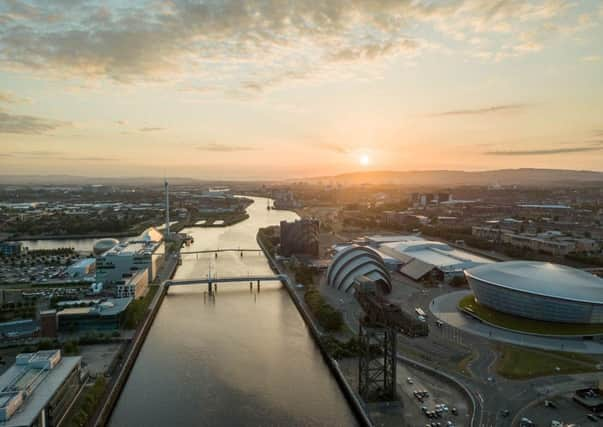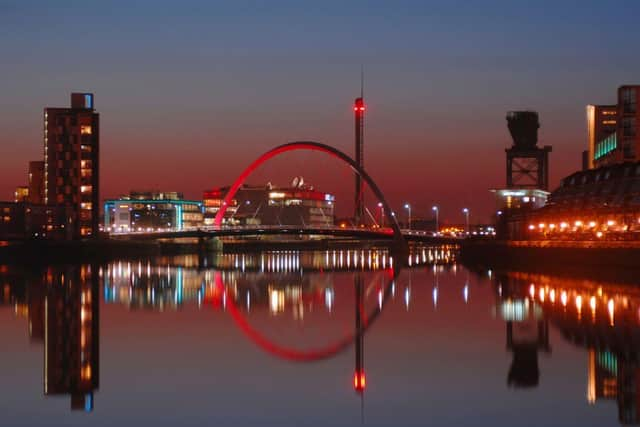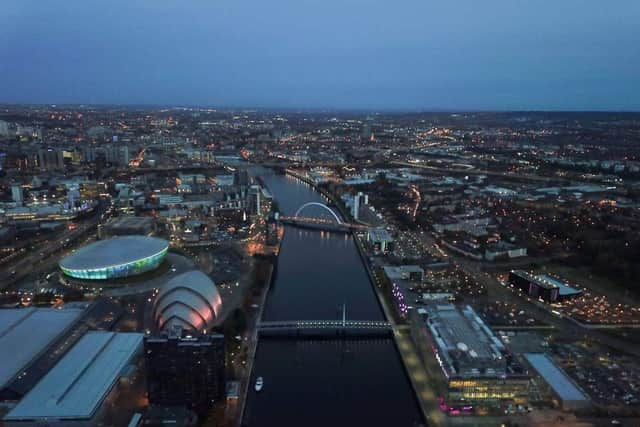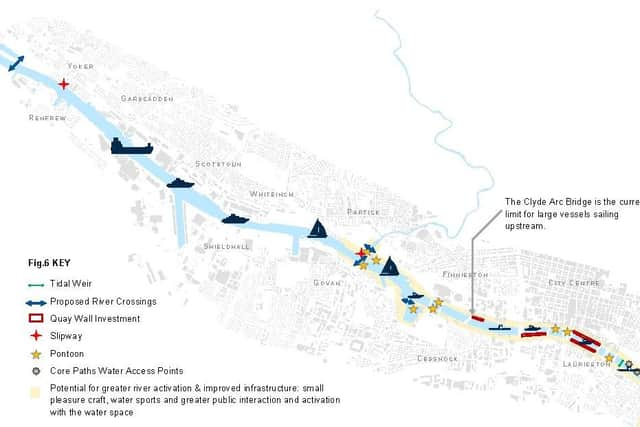The Clyde could become a transport of delight again - Alastair Dalton


But I have often reflected on its relatively barren banks compared to those of cities like Melbourne, whose buzz of bars and cafes along the Yarra I vividly remember riding past on my last visit to an expat west coast Scot.
Some amazing buildings have appeared along the Clyde over the last few decades, such as the Glasgow Science Centre, the Armadillo and Hydro venues at the Scottish Event Campus (SEC), and the Riverside Museum.
Advertisement
Hide AdAdvertisement
Hide AdThey provide spectacular backdrops to a ride, especially when lit up at night, along with the illuminations from other landmarks such as BBC Scotland’s headquarters and the Clydeside Distillery which occupies the former Queen’s Dock pumphouse beside the Clydeside Expressway.


The river – the city’s largest continuous open space – also affords some fantastic views, such as past the SS Glenlee “Tall Ship” towards the city centre from a section of walkway in Govan opened by native Sir Alex Ferguson three years ago.
Spectacular sunsets and dazzling nightscapes are a magnet for throngs to capture the moment from the Millennium and Bell’s bridges.
I know I have on the way home, taking some of my most memorable images of Glasgow over the years.
However, in my forays along the river, there is still so much waste ground and so many derelict sites, years after promised developments.


There are also frustrating gaps in the riverside path, especially on the south bank, forcing inland detours, such as between the Kingston and Clyde Arc “Squinty” bridges, and around Govan Graving Docks, where Steven Spielberg filmed part of 1917.
It was thus with great interest I read of plans to finally sort these in a blueprint for the river over the next 30 years, published by the city council this week.
It calls for the joining up of these discontinuous walkways to make the Clyde part of a network of walking and cycling routes along Glasgow’s waterways, which also includes the River Kelvin and the Forth & Clyde Canal.
Advertisement
Hide AdAdvertisement
Hide Ad

The “strategic development framework” also highlights no less than four new bridges planned for the Clyde.
As well as the widely publicised crossing between Partick and Govan, and the replacement for the Renfrew-Yoker ferry on Glasgow’s western city limit, maps also show a bridge over the Kelvin near its mouth at the Clyde, and across to the Graving Docks from the Millennium Tower beside the Science Centre.
They provide a host of new route options for riders and walkers.
Their potential significance is reflected in the strategy noting that the Tradeston “Sqiggly” Bridge in the city centre was “instrumental” in the current development of the adjacent Buchanan Wharf for offices and housing – one of Scotland’s biggest such projects.
There could even be scope for a fifth new river crossing between there and the Squinty Bridge.
The Clyde was once the industrial focus of Glasgow – and Scotland. The city was later accused of turning its back on the river, but as this document reveals, it is still making an about turn to appreciate once more the waterway’s potential.
The challenge is to ensure this is not yet another glossy document and beomes the catalyst for tangible progress by the time the eyes of the world focus on the Clyde when the COP26 climate change conference comes to the SEC next year.
A message from the Editor:
Thank you for reading this story on our website.
While I have your attention, I also have an important request to make of you.
With the coronavirus lockdown having a major impact on many of our advertisers - and consequently the revenue we receive - we are more reliant than ever on you taking out a digital subscription.
Subscribe to scotsman.com and enjoy unlimited access to Scottish news and information online and on our app.
With a digital subscription, you can read more than five articles, see fewer ads, enjoy faster load times, and get access to exclusive newsletters and content.
Visit https://www.scotsman.com/subscriptions now to sign up.
Our journalism costs money and we rely on advertising, print and digital revenues to help to support them.
By supporting us, we are able to support you in providing trusted, fact-checked content for this website.
Joy Yates
Editorial Director
Comments
Want to join the conversation? Please or to comment on this article.